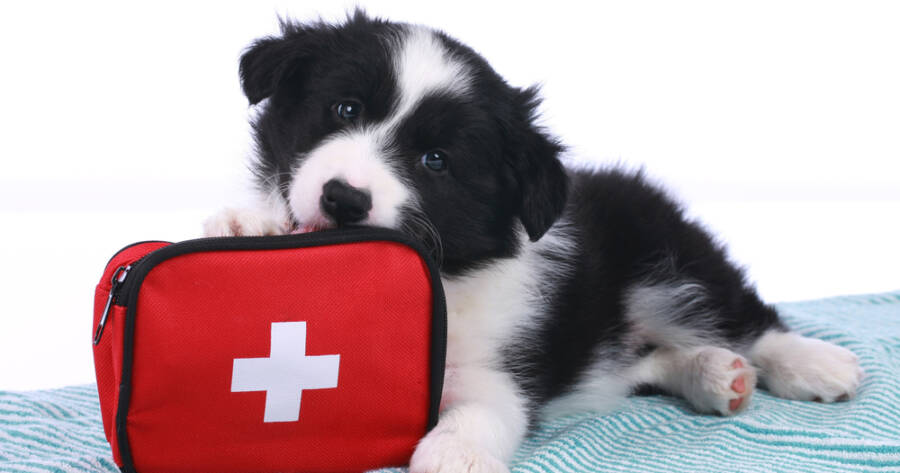When a pet emergency strikes, timely response and preparedness can be crucial in safeguarding a pet’s health. Building a comprehensive pet care emergency kit can equip owners with the necessary tools and knowledge to react swiftly and effectively in urgent situations, potentially improving outcomes. Learn how to assemble a home emergency kit tailored to a pet’s specific needs, ensuring that you are better prepared to handle unforeseen incidents with confidence and care.
The Importance of an Emergency Care Kit
An emergency care kit for pets serves as an essential resource in critical situations, enabling pet owners to administer preliminary care while seeking professional veterinary assistance. By preparing a well-stocked kit, owners can address minor injuries, stabilize a pet’s condition, or prevent complications while transportation to a veterinary clinic is arranged.
The ability to perform first-aid can be particularly valuable in remote or after-hours situations where immediate professional help may not be readily accessible. Moreover, a comprehensive kit enhances readiness for a variety of scenarios, from injuries and allergic reactions to natural disasters requiring evacuation. Taking these measures can reduce stress during emergencies, offering peace of mind that essential supplies and information are within reach.
Key Components of a Comprehensive Pet Emergency Kit
When assembling an emergency kit, selecting a rugged, waterproof container ensures durability and accessibility. The contents should be tailored to your specific pet’s species, size, and health conditions, as well as accommodating any other animals in the household.
- First aid supplies: Essential items for treating immediate injuries include sterile gauze, adhesive bandages, antiseptic wipes, and a digital thermometer. Tweezers, blunt-tip scissors, and an ice pack can address minor injuries and swelling.
- Medications and health products: Include any prescription medications your pet requires, stored in their original containers with clear labels. Duplicate prescriptions can be useful when fast access to medications is needed. Over-the-counter options such as antihistamines (suitable for your pet’s species) can assist with allergic reactions, while hydrogen peroxide may be used in specific circumstances as directed by a vet.
- Information and communication tools: Compile important contact numbers, including your regular veterinarian, a 24-hour emergency clinic, and pet poison hotlines. Medical records and recent photos of your pet stored in the kit can assist during vet visits or if your pet becomes lost. A fully-charged portable phone charger ensures you can reach assistance when needed.
- Food and water supplies: Keep a supply of your pet’s regular food and bottled water, sufficient for at least two to three days. Collapsible bowls or water bottles with inbuilt trays provide convenient access. Ensure food is sealed in airtight containers to maintain freshness.
- Comfort and restraint items: Leashes, harnesses, or carriers are vital for safe transport, particularly in stressful circumstances. Familiar comfort items like favorite toys or blankets can help soothe your pet during upheaval.
- Reference materials: A pet first-aid manual can be invaluable during emergencies, offering guidance on immediate actions and best practices for stabilization before professional help arrives.
Preparing for Specific Scenarios
Tailoring your emergency kit involves considering common emergencies that your pet might face, addressing unique needs based on their species and individual health history. Pets with chronic health conditions may require specific treatments or special considerations.
For example, in the event of injury from a cut or bite, basic wound care can include cleaning with antiseptic wipes and wrapping with gauze to control bleeding. If your pet ingests a toxic substance, having pet-safe activated charcoal may absorb some toxins, though consulting a vet immediately is crucial.
Natural disaster preparedness requires a focus on mobility and comfort. Extra leashes, ID tags, and a sturdy, easily portable carrier must be prioritized for evacuation scenarios. Keeping identification microchip information up to date bolsters chances of recovery if your pet is lost or separated.
Regular Maintenance and Practice Drills
Once your kit is assembled, regularly check and update the contents to accommodate any changes in medications, replace expired items, and adjust for seasonal needs. Running practice drills can familiarize family members with the kit’s contents and improve response times during a real emergency.
Engaging in regular vet-recommended first-aid training courses can provide valuable skills, ensuring you recognize symptoms, manage vital signs, and apply safe restraint techniques effectively, even in high-pressure situations.
Learn More Today!
A well-prepared pet emergency care kit serves as an essential tool for proactive pet ownership, equipping pet parents with the resources needed to navigate unexpected incidents confidently. By tailoring the kit’s contents to address individual pet needs and maintaining readiness through regular practice and updates, owners can create a reliable foundation for handling emergencies.
This preparation extends beyond convenience, fostering peace of mind and highlighting the commitment to ensuring the safety and well-being of cherished companions. As pet care evolves, staying ready for emergencies with a comprehensive kit underscores the vital role of preparedness in responsible pet ownership.

